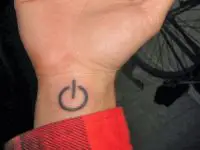Tattoos have become increasingly popular in recent years, with more and more people getting inked with meaningful designs, artistic expressions, or simply to make a statement. However, for some people, tattoos can become a source of regret, leading them to seek out tattoo removal options. In this article, we will explore the various methods of tattoo removal and what you can expect from the process.
Reasons for Tattoo Removal
There are many reasons why someone might want to remove a tattoo. Perhaps the design no longer represents who they are, the tattoo has faded or distorted over time, or it was poorly done in the first place. Some people may also want to remove a tattoo in order to improve their job prospects or to comply with military regulations.
Methods of Tattoo Removal
There are several methods of tattoo removal available today. Each method has its own advantages and disadvantages, and the best option for you will depend on factors such as the size and location of the tattoo, the color and type of ink used, and your skin type.
Laser Removal
Laser removal is the most common method of tattoo removal, and is considered to be the most effective. During the procedure, a high-intensity laser beam is directed at the tattoo, breaking up the ink particles into smaller pieces that can be absorbed by the body’s immune system.
Laser removal can be painful, and may require multiple sessions depending on the size and complexity of the tattoo. The cost of laser removal can also be quite high, although many people feel that it is worth it for the results.
Surgical Removal
Surgical removal involves cutting out the tattoo and stitching the skin back together. This method is typically used for small tattoos and is not recommended for larger designs.
Surgical removal can be effective, but it can also be painful and may leave scarring. It is also more expensive than laser removal.
Dermabrasion
Dermabrasion involves “sanding” away the top layer of skin, along with the tattoo ink. This method can be painful and may cause scarring or discoloration.
Dermabrasion is less commonly used today, as laser removal is considered to be a more effective and less painful option.
Chemical Removal
Chemical removal involves applying a chemical solution to the skin that breaks down the ink particles. This method can be painful and may cause scarring or discoloration.
Chemical removal is not commonly used today, as laser removal is considered to be a more effective and less painful option.
What to Expect During the Removal Process
The tattoo removal process can be painful and may require multiple sessions depending on the size and complexity of the tattoo. It’s important to discuss the process with your doctor or tattoo removal specialist beforehand, so you know what to expect.
During laser removal, you may feel a stinging or burning sensation, similar to getting a tattoo. The area may also be swollen or tender for a few days following the procedure.
After the procedure, it’s important to keep the area clean and dry to prevent infection. You may also be advised to avoid exposing the area to sunlight or tanning beds, as this can cause discoloration.
Tattoo removal can be a difficult and painful process, but it can also be a liberating experience for those who regret their tattoos. It’s important to carefully consider your options and to discuss the process with a qualified professional before making a decision.
If you are considering tattoo removal, be sure to do your research and find a reputable provider who has experience in the procedure. With proper care and attention, you can successfully remove your tattoo and move forward with a fresh start.























0 Comments